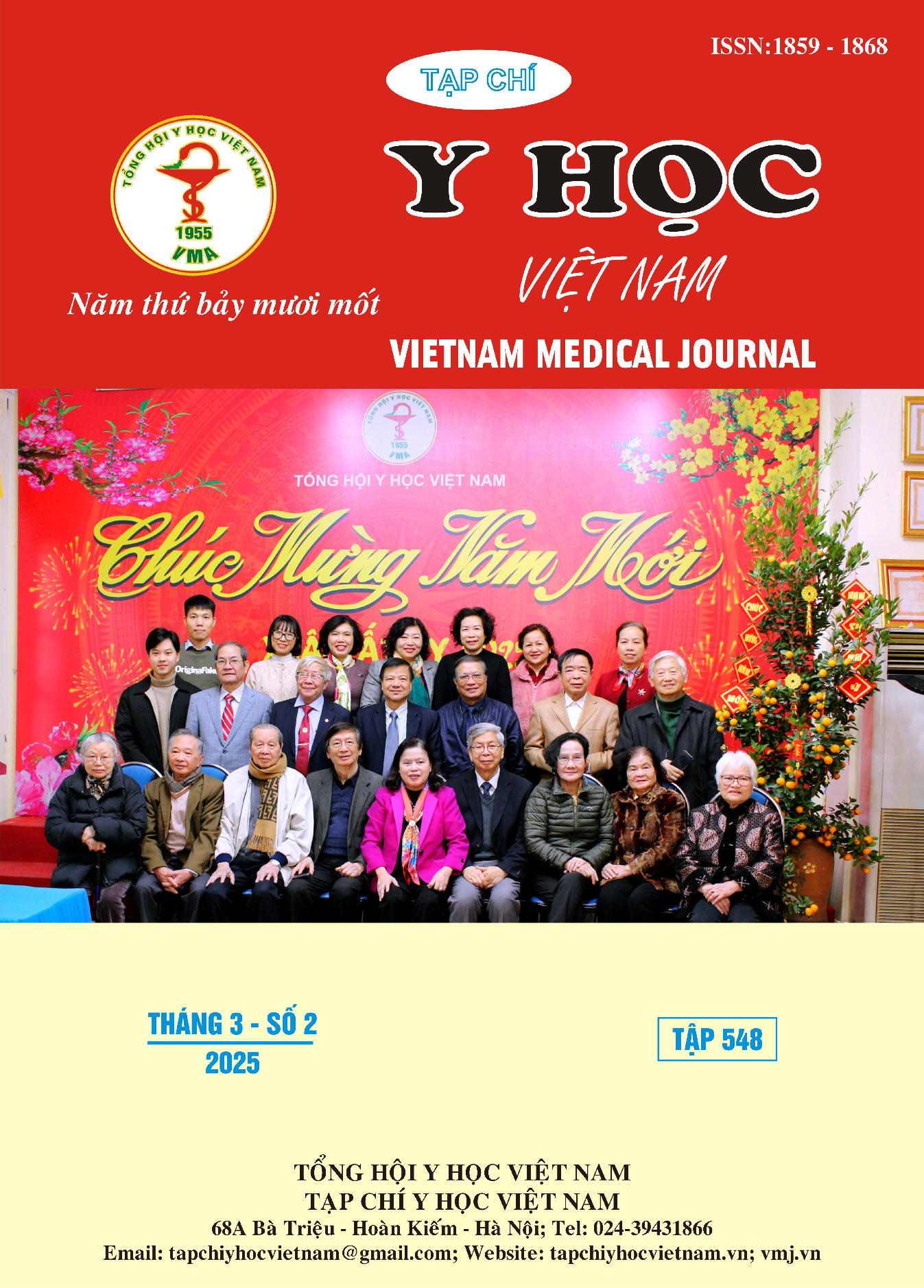RESULT OF RIGHT VENTRICULAR OUTFLOW TRACT STENTING IN PATIENTS WITH RIGHT VENTRICULAR OUTFLOW TRACT OBSTRUCTION IN CHILDREN’S HOSPITAL 1
Main Article Content
Abstract
Background: Right ventricular outflow tract obstruction (RVOT) is a congenital heart defect that causes reduced pulmonary blood flow. RVOT stenting is a minimally invasive treatment and improves hemodynamics. This study aimed to evaluate the efficacy and safety of RVOT stenting in pediatric patients. Objectives: To evaluate the result of RVOT stenting in patients with RVOT obstruction at Children's Hospital 1 from January 1, 2019 to June 1, 2021. Method: Cross-sectional study. Results: The study on 32 patients with median age 76 days, newborns account for 31.2%. Median weight 4.7 kg. The patients are central cyanosis with median SpO2 of 76% with complex congenital morphology and severe comorbidities, of which 71.9% had tetralogy of Fallot. The McGoon and Nakata indexes have medians of 1.4 and 108.7 mm2/m2. Results immediately after stenting: Median SpO2 94.5% and statistically significant improvement (p < 0.001) compared to baseline and success rate 93.7%. No procedure-related deaths. Results after 6 months: Median SpO2 88% and statistically significant difference (p < 0.001) compared to before stent placement. The main and two branches of PA developed: Z score of the right PA increased from -1.8 to -0.3; the left PA increased from -2.1 to -0.3 and PA trunk increased from -3.3 to -1.9 (p < 0.001). Conclusions: RVOT stenting is a treatment method with high success rate, safety and low complications, facilitating complete surgical repair
Article Details
Keywords
right ventricular outflow stenting, RVOT obstruction
References
2. Dearani J. A., G. K. Danielson, F. J. Puga, et al. Late follow-up of 1095 patients undergoing operation for complex congenital heart disease utilizing pulmonary ventricle to pulmonary artery conduits. The Annals of thoracic surgery. Feb 2003;75(2):399-410; discussion 410-1. doi:10.1016/s0003-4975(02)04547-2
3. Petrucci O., S. M. O'Brien, M. L. Jacobs, et al. Risk factors for mortality and morbidity after the neonatal Blalock-Taussig shunt procedure. The Annals of thoracic surgery. Aug 2011;92(2):642-51; discussion 651-2. doi:10.1016/j.athoracsur.2011.02.030
4. Lemler MS, Ramaciotti C. Anomalies of the Right Ventricular Outflow Tract and Pulmonary Valve. Echocardiography in Pediatric and Congenital Heart Disease From Fetus to Adult. Wiley-Blackwell; 2014:281-296.
5. Castleberry C. D., T. M. Gudausky, S. Berger, J. S. Tweddell, A. N. Pelech. Stenting of the right ventricular outflow tract in the high-risk infant with cyanotic teratology of Fallot. Pediatric cardiology. Mar 2014;35(3):423-30. doi:10.1007/s00246-013-0796-z
6. Dohlen G., R. R. Chaturvedi, L. N. Benson, et al. Stenting of the right ventricular outflow tract in the symptomatic infant with tetralogy of Fallot. Heart (British Cardiac Society). Feb 2009;95(2):142-7. doi:10.1136/hrt.2007.135723
7. Tanıdır İ C., M. O. Bulut, H. Kamalı, et al. Right ventricular outflow tract stenting during neonatal and infancy periods: A multi-center, retrospective study. Turk gogus kalp damar cerrahisi dergisi. Jul 2020;28(3):442-449. doi:10.5606/tgkdc.dergisi.2020.18970
8. Stumper O., B. Ramchandani, P. Noonan, et al. Stenting of the right ventricular outflow tract. Heart (British Cardiac Society). Nov 2013;99(21):1603-8. doi:10.1136/heartjnl-2013-304155
9. Nguyễn Kinh Bang, Nguyễn Hải Âu, Nguyễn Quang Thiện, et al. Đánh giá kết quả ngắn hạn phẫu thuật sửa chữa triệt để tứ chứng Fallot tuổi nhũ nhi. Tạp chí Y học TP Hồ Chí Minh. 2018;1(22):tr. 360-366.
10. Bertram H., M. Emmel, P. Ewert, et al. Stenting of Native Right Ventricular Outflow Tract Obstructions in Symptomatic Infants. Journal of interventional cardiology. Jun 2015;28(3):279-87. doi:10.1111/joic.12198


